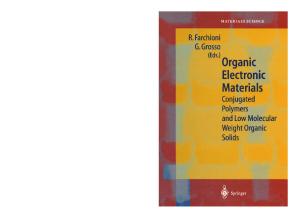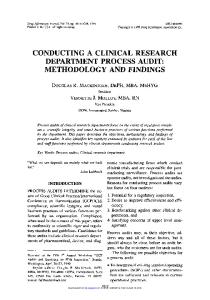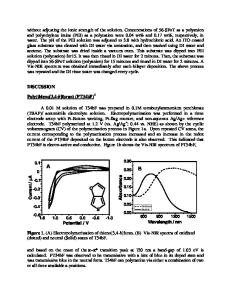Theoretical Research of Loop Formation Process in Conducting Polymers
- PDF / 141,781 Bytes
- 5 Pages / 612 x 792 pts (letter) Page_size
- 70 Downloads / 339 Views
1091-AA05-72
Theoretical Research of Loop Formation Process in Conducting Polymers Nigora Turaeva, and Boris Oksengendler theoretical department, institute of polymer chemistry and physics, kadiri str. 7B, Tashkent, 100128, Uzbekistan Abstract Conducting polymers promise a wider range of successful devices than traditional semiconductors. Differing from the traditional semiconductors in conducting polymers the topology of the system may be significant. Some of the important features such optic and electric properties can be changed largely by loop formation. In this work the loop formation process in conducting polymers has been considered by means of the Green-function method for the electronic spectra fixing. It was shown that at the changing of connectivity of quasi-one dimensional simple polymer strand due to the loop formation two local electronic states are appeared in the electronic spectra of the system. We supposed such model can be important for optic properties of such polymer systems with loops, increase the reaction ability of local loop area, loop stabilization due to the electron-conformational interaction in conducting polymers. In nanoelectronics biologic polymers are broadly used for charge or energy transfer [1]. Properties of such materials depend on the electronic spectra (electrons, holes, excitons). The problem of calculation of electronic spectra of conducted polymers was deeply studied [2,3]. Although the problem of molecule structure topology influence on electronic spectra remains unsolved. In this work electronic spectra change from structure topology at loop formation is considered. Since the famous paper by Kronig and Penney [4], who derived the electron spectrum of a single-component, periodic, ID chain, linear chains have served as an excellent model for the analysis of many properties and effects of condensed matters [5]. The results of this research have taken on particular importance in the physics and biophysics of polymer chains [6]. In the present letter we examine the onset of a local electron state due to a special configuration of a quasi-lD chain, specifically, the formation of a loop on the chain (Fig. 1), with the result that the topology of the system is altered. We consider the simple quasi-ID chain in Fig. 1. The Green's function of this system in the one-electron approximation, for the strong-coupling method, is r r
r
r
G o (r , r ′, ω ) = ∑ φ k (r )φ k* (r ′)G o (k , ω ),
(1)
k
r
where G o (k , ω ) = 1 [ω − A cos(ka)] , φ k (r ) is the wave function of an electron in the chain, given by
φ k (r ) = ∑ e iknaφ ( r − a n ) / N , r
r
r
r
an = a
∑e , n
r
i
i
Here ei is a unit vector directed along segment i, φ ( r − a n ) is the normalized wave function of an electron in an isolated atom in the 5 state near site n, A/2 is the resonant integral of the coupling of two neighboring atoms (A 0),
(12a)
2
− 1 − gy − g (−1) m y m +1
(12b)
2
− 1 + gy − g (−1) m y m +1
( y < 0) ,
where g = t / A . Since we have y>0 and y
Data Loading...











